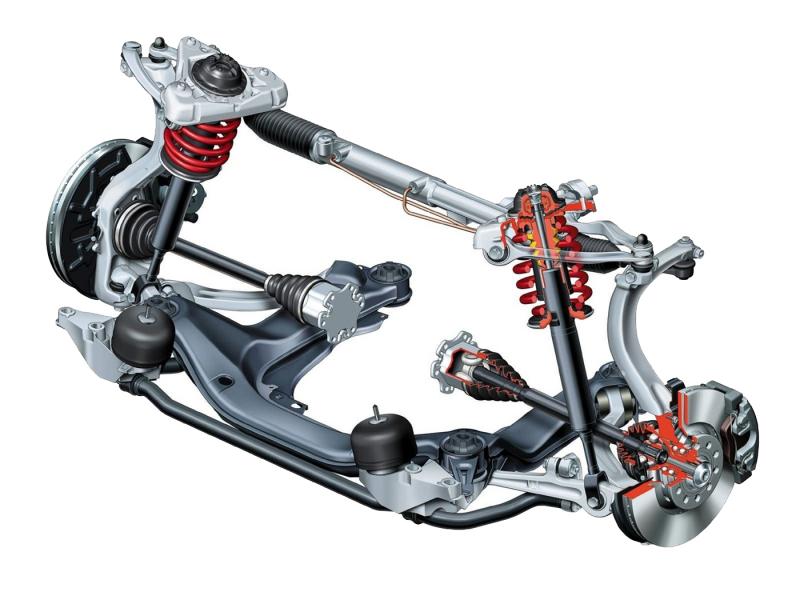
Calendar page: December 31 - January 6
Content
- December 31.12.1953, XNUMX | Created a preliminary prototype of the Siren
- 1.01.1975 | Foundation Iveco
- January 2.01.2014, XNUMX | Fiat takes over Chrysler
- January 3.01.1926, XNUMX | The birth of the Pontiac brand
- 4.01.2011 | Mercury brand closure
- January 5.01.1996, XNUMX | General Motors announces the start of sales of its first electric car
- January 6.01.1973, 770 | Mercedes-Benz XNUMXK sold for a record amount
We invite you to an overview of events in the history of the automotive industry, the anniversary of which falls this week.
December 31.12.1953, XNUMX | Created a preliminary prototype of the Siren
In November 1951, the production of the first post-war car "Warsaw" began. It was a big, expensive car that wasn't designed to carry the average Kowalski. At the government level, the need to develop a smaller design, powered by a small gasoline engine, that could be driven by scientists, journalists, and union leaders was quickly recognized.
Yes, in 1953 work began on Sirena, the basic assumption of which was to use as many elements from Warsaw as possible: wheels, brake discs, shock absorbers, steering system, interior trim and headlights.
It was also agreed that the car should have front-wheel drive, a two-stroke engine, a large trunk and seating for 4 to 5 people. It was originally planned to build a car on a wooden frame with dermatoid plates applied to it. So the first few preliminary prototypes were created, the first of which was ready on December 31, 1953.
The following year, the development of the project continued. Ultimately, it was decided to use a sheet metal body. In 1956, complete production documentation was already prepared, and in 1957, the first hundred vehicles were assembled. Serial production began in 1958 and continued until June 1983.
1.01.1975 | Foundation Iveco
Iveco, today one of the so-called "Big Seven" truck manufacturers, is a relatively young company. It was created only in 1975, i.e. several decades after the first DAF, Renault, Mercedes and Scania trucks.
If Iveco were created from scratch, in the mid-s, when the oil crisis was raging, it would not be easy. Fortunately, the brand was created a little differently. Under the patronage of Fiat, several companies have merged: Fiat, Lancia, OM, Unic and the German division of Magirus-Deutz.
Iveco's offer was complete, from vans and light trucks to tractors and trucks prepared for specialized development. In 1978, the Iveco Daily was founded and is to this day one of the most important vans on the European market.
January 2.01.2014, XNUMX | Fiat takes over Chrysler
On January 2, 2014, Fiat announced the next step in its acquisition of Chrysler, which began in 2009. Fiat initially acquired 20 percent of the American brand, with a majority stake acquired in 2012. The Italians did not stop there. The full acquisition of Chrysler occurred on January 2, 2014, when the remaining 41,5 percent of the shares were bought back for $3,65 billion. This made it possible to found a new concern. Fiat Chrysler Automobiles was founded on October 12, 2014. He finished his first full year of operation with 4,6 million vehicles sold.
January 3.01.1926, XNUMX | The birth of the Pontiac brand
By the mid-s, there were a significant number of brands in the portfolio of General Motors. There were Chevrolet, Oldsmobile, Cadillac, GMC, Oakland, LaSalle and, of course, Buick, from which the history of the concern began. The General Motors Board decided to create the Pontiac brand, named after the Indian leader who fought with the British. The company was supposed to be a cheaper alternative to Oakland cars.
The economic crisis of the late 1931s brought changes to the corporation. Oakland closed that year, and Pontiac became more closely associated with Chevrolet, which could reduce production costs.
The Pontiac has been a sedate driver's car for many years, and technologically it was no different from the Chevrolet, as it was at the very beginning of its operation.
The company lasted until the next economic crisis, which severely undercut General Motors. In 2009, production was discontinued.
4.01.2011 | Mercury brand closure
After Henry Ford's son Edsel took over, there were several changes. In 1922, Ford bought the Lincoln to compete with the most prestigious competition cars. There was also a need for an intermediate brand between a cheap Ford and an expensive Lincoln. In this case, it was decided to create a new company. Mercury was founded in 1938. For military reasons, the beginning was not happy, but after the end of operations in Europe and the Pacific, development began.
The cars were slightly more expensive than the Fords they were based on, but had better equipment and slightly more powerful engines. Styling modifications were also made, but technologically the Mercury was based on the cheaper Ford. The development of the brand continued in subsequent years, and a serious regression did not occur until the new millennium, when the market share decreased every year.
In 2000, 359 thousand were sold. cars; in 2005 there were already 195 thousand. ed. In the last year of work, the result fell to 93 thousand. vehicles, accounting for 1% of the market. The official termination of the brand took place on January 4, 2011.
January 5.01.1996, XNUMX | General Motors announces the start of sales of its first electric car
General Motors' first electric car, the EV1, is surrounded by a conspiracy from oil companies that have blocked the development of the project.
On January 5, 1996, General Motors announced that it would launch its electric car that same year. Interestingly, this was a car with the General Motors logo, unlike other cars in the group, which had logos of brands created or acquired by GM. EV1 was supposed to be a demonstration of the innovativeness of the entire concern.
Work on the model began in the late 1990s. The first concept car was shown in 1994, and prototypes appeared in 1996. In the fall of 2003, General Motors announced a leasing program in California and Arizona that was in effect until 1117. 2003 units of the model were produced and received excellent user reviews. The stranger was the end of the program for the year and the massive destruction of equipment.
January 6.01.1973, 770 | Mercedes-Benz XNUMXK sold for a record amount
Mercedes-Benz 770K is the most luxurious German car of its time, and at the same time the executive car of Adolf Hitler and the closest associates of the leader of the Third Reich. Not only did it have a majestic appearance and excellent finish, but also an excellent engine with a displacement of more than 7.6 liters, which produced 150 hp, and even 230 hp in combination with a compressor.
This exact car was sold at auction in January 1973 as Adolf Hitler's vehicle. The auction ended with a record amount of $153. At the time, it was the largest amount anyone had ever spent on a car.
As an executive car, this car had a reinforced body and a 5,5-6 mm thick floor and 40 mm thick windows. The armor increased the weight to 4 tons and reduced the top speed to 170 km/h.
Interestingly, a week after the purchase of the record, it turned out that the user was the President of Finland, and not Hitler. That didn't stop him from hitting his next record high when a buyer decided to sell it after just six months.
